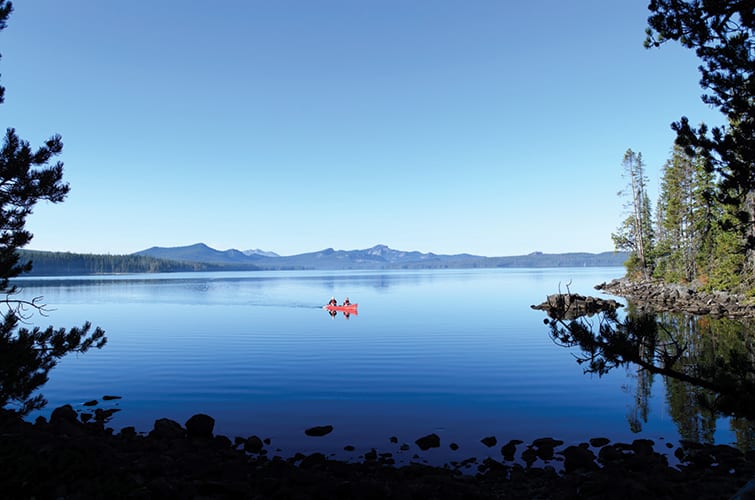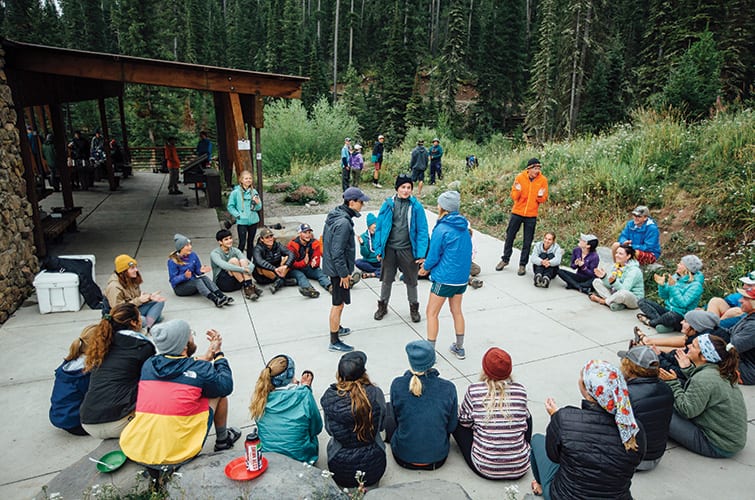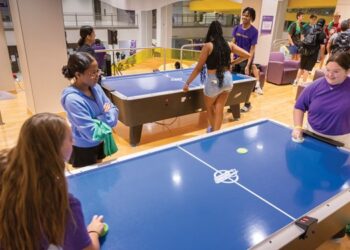Imagine being able to call up an outdoor program expert and ask them, “Where should I go camping and what do I bring?”
Except don’t imagine it because it’s actually happening at Texas A&M University. Jason Kurten, the director for Outdoor Adventures, said the idea for their outdoor concierge service came about during the summer of 2020 due to COVID-19. “What we are finding is people are saying, ‘I want to go camping. I’m tired of sitting in the house; I’m tired of being cooped up. I want to get up and go to these outdoor places, but I’ve never camped before,’” said Kurten.
Launched earlier this fall, students and community members can sign up for 15 minutes to hour-long slots, consulting not only Kurten himself but student trip coordinators as well. That was another large benefit to the add-on service. “We want to do it as a way to keep our trip leaders busy because they are not guiding trips right now, but they still have the expertise to give to a person who wants to go outside,” he shared.
This example is telling of the evolving landscape of outdoor programs. Not only does the ever-changing environment play a large role, but so does the surrounding community and what it wants.
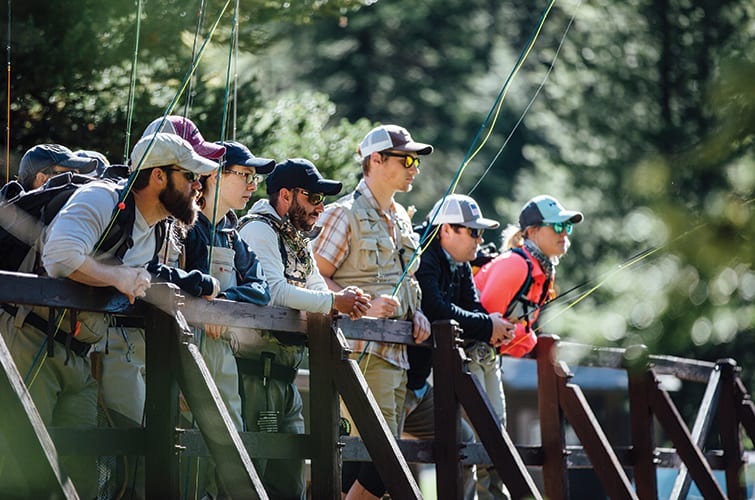
For instance, Montana State University (MSU) is moving toward more educational classes. Ty Atwater, the director of Outdoor Recreation Programs and Climbing Wall, said students don’t just want an experience anymore. Classes like their Avalanche 1 offering are in high demand. “I think it trends toward students wanting tangible skills; they want to learn how to go do it themselves,” said Atwater.
Students are also clamoring for peer-to-peer connection. As such, first-year student outdoor orientation programs have taken off. Atwater said these programs often address the feeling of being lost and the anxiety of moving in. “For us, it’s all about how we build that tool box, that set of tangible, portable tools they then take from the backpacking course,” he said.
Kurten also shared their Venture Camps program has been a huge hit. New students go on a five-day trip, camping and spending the days hiking, paddling and cleaning up the river. Each day is themed after one of the university’s core values.
In fact, student connection is what Willamette University has found to be most important in its outdoor offerings as well. Charlotte Howland, the Outdoor Program coordinator, said they accomplish this through a variety of activities. One area where the program has grown is in the inclusion of more specialized trips like Wellness Yurt Camping. They have also increased their accessible trip offerings that include a trip fee waiver so cost isn’t prohibitive.
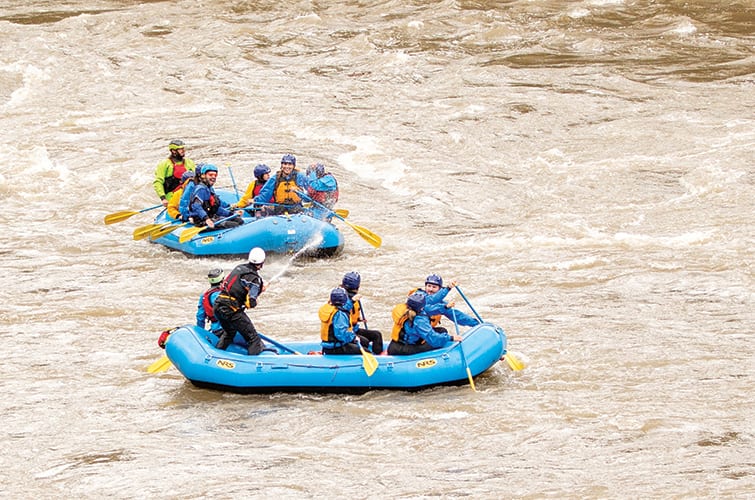
However, COVID-19 has caused more pivoting than expected for the outdoor folks in campus recreation. Unable to transport students in vans for trips, Willamette University is focusing on offering socially-distanced trips centered on wellness, biking, gardening and outdoor games. “What is most important in our program is the connections students can make outdoors, and that those are still possible closer to campus and six feet apart with masks,” said Howland.
Beck Van Horsen, the assistant director of Outdoor Adventures at the University of California, Davis (UC Davis), said they had to have a mindset shift as initially they didn’t know how to offer the outdoors to people stuck at home. “We made it our mission to inspire folks to get outside in their neighborhoods, find happiness in the nature outside their door and learn new things they didn’t know they would be interested in,” said Van Horsen. “We were so pleased with the results of our virtual outdoor experiences — from sharing birding and campfire songs to planning a hike.”
This fall, UC Davis offered more virtual outdoor program content, such as classes and clinics on Zoom. And the hope is these videos will exist for years to come to provide better and more in-depth training.
But not every outdoor trend has been virtual this year. Many programs across the country have seen a large boost in their rental programs, Texas A&M being one of them. Plus, over the years UC Davis has come to use its gear rental program to support research in various academic programs.
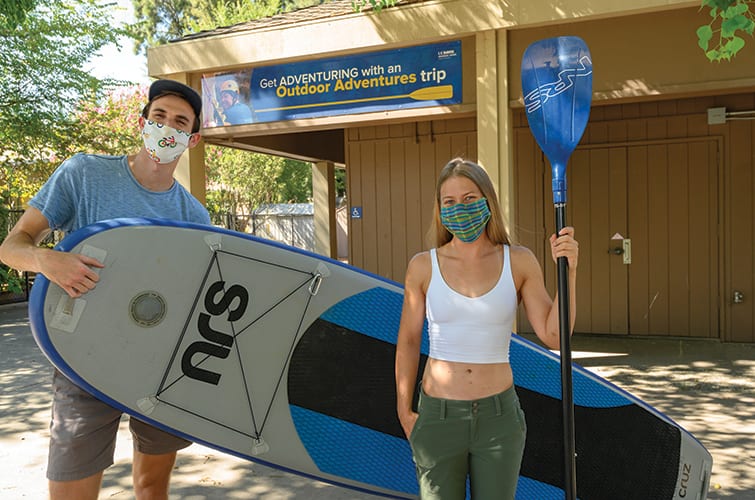
However, what universities have to rent has changed. For instance, Kurten said not too long ago Spikeball was the thing to have; now, it’s stand-up paddleboards and sit-on-top kayaks.
Plus, he noted it’s time to broaden one’s perspective of what “outdoors” includes. He shared many Texans’ version of the outdoors is more along the lines of hunting and fishing. While he can’t rent out guns, he is wondering how he can snag this population with a creative outdoor program, whether that’s through unique rentals or gun safety classes. “I’m trying to be more broad about what can I do to meet those people where they are,” he said. “Should I offer duck decoys in my things you can rent from our program?”
But perhaps the biggest area of outdoors, in Atwater’s opinion, that still needs to see evolution revolves around the fact the outdoor user base is pretty non-diverse. “The biggest area for our growth, and hopefully the place we continue to grow, is making inroads with some of those underrepresented populations on our campus,” he said.
That requires being intentional in how you market and who you hire. Atwater said they are deemphasizing the need for previous skills when hiring students for an outdoor program offering. In fact, their first round of interviews is a large group interview where they play games and facilitate activities, looking at how people are interacting before assessing any technical skills.
UC Davis also looks to raise up students, training them with all the technical skills they need via guide schools in multiple disciplines that are offered over the course of a school year. Students can gain soft skills and risk management insight, as well as technical abilities. “After completion of guide school, trainees are eligible for employment with Outdoor Adventures and can move on to guiding our commercial trip offerings,” said Van Horsen.
All in all, the outdoors is evolving, and who uses it must as well. Programs, rentals and trainings are one side of the story; reaching new and diverse populations is another. Both moving forward together will keep the outdoors top of mind. “We’ll be missing the boat if we don’t figure out ways to engage more of the populations on our campus,” said Atwater.



